|

HOME |
ABOUT | INDEX |
NEWS |
FACEBOOK |
CONTACT
COSPLAY
Role Play
| Characters | Furries | Therian
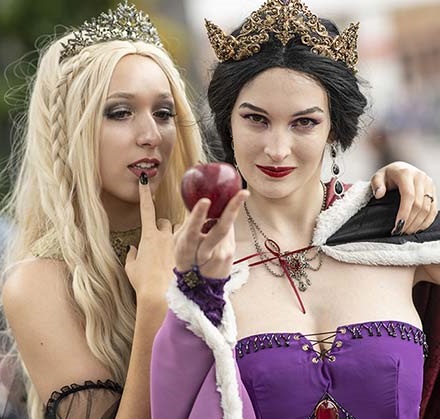

Drag|Cross Dressing
Ballroom
Culture
Bear Community
BDSM|Kinky Lifestyle
Fashion and Design
Digital|Online|Streaming

Costume Play
Time
to dress up...
Think
Halloween costume but all year-round and then dial it up
to 11. Cosplay, or "costume play," is a performance art in
which participants called cosplayers (or cosers) wear
costumes and fashion accessories to represent a specific
character. Cosplayers often interact to create a
subculture. A broader use of the term "cosplay" applies
to any costumed role-playing in venues apart from the
stage. Any entity that lends itself to dramatic
interpretation may be taken up as a subject and it is
not unusual to see genders switched. Favorite sources
include anime, cartoons, comic books, manga, live-action
films, television series, and video games.
The rapid growth in the number of people cosplaying as a
hobby since 1990s has made the phenomenon a significant
aspect of popular culture in Japan and some other parts
of Asia and in the Western world. Cosplay events are
common features of fan conventions and there are also
dedicated conventions and local and international
competitions, as well as social networks, websites and
other forms of media centered on cosplay activities.
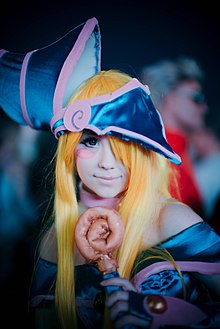
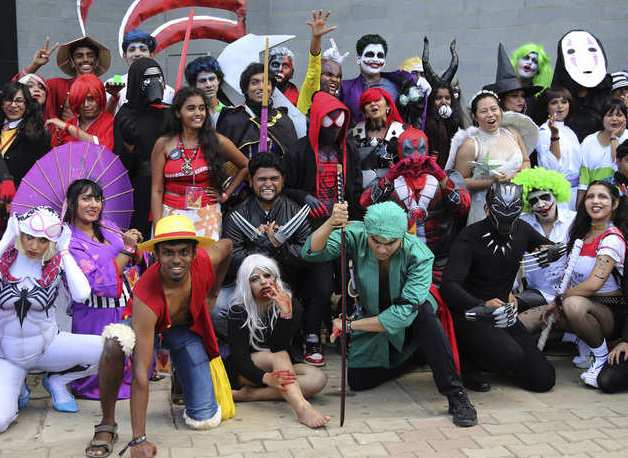
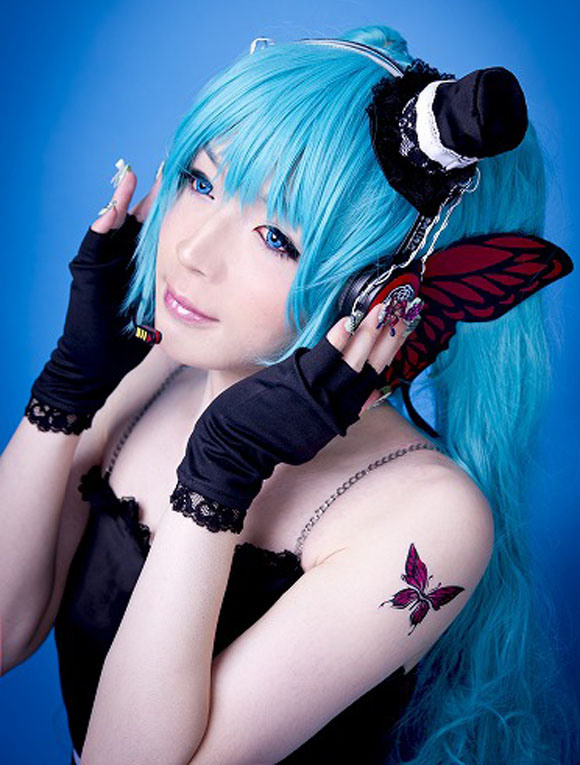
Cosplay
costumes vary greatly and can range from simple themed
clothing to highly detailed costumes. It is generally
considered different from Halloween and Mardi Gras
costume wear, as the intention is to replicate a
specific character, rather than to reflect the culture
and symbolism of a holiday event. As such, when in
costume, some cosplayers often seek to adopt the affect,
mannerisms, and body language of the characters they
portray (with "out of character" breaks). The characters
chosen to be cosplayed may be sourced from any movie, TV
series, book, comic book, video game, music band, anime,
or manga. The costumes may represent fantasy or
fictional characters, video game characters, cartoon
characters, or superheroes. Sometimes cosplayers take a
creative twist and incorporate genderbending, crossplay,
mashup, or drag.
And
sometimes a cosplayer will make up a unique persona and
invent a character. This is called "OC" or "Original
Character."
Cosplay
Explained
Video: What is Cosplay?
Cosplay Terminology
Mental Floss: Cool Cosplay Terms
The Best Disney Cosplays
Cosplay 101: Everything
You Need to Know
Famous Cosplayers
Video: Overview of Cosplay Culture
Cosplay Dictionary
Video Talk: What Does it Mean to be a Cosplayer?
Cosplay Etiquette Rules
Info:
Kinky Culture
Comic Con: Costumes That
Turned Heads
What is the Pup Play Queer Subculture?
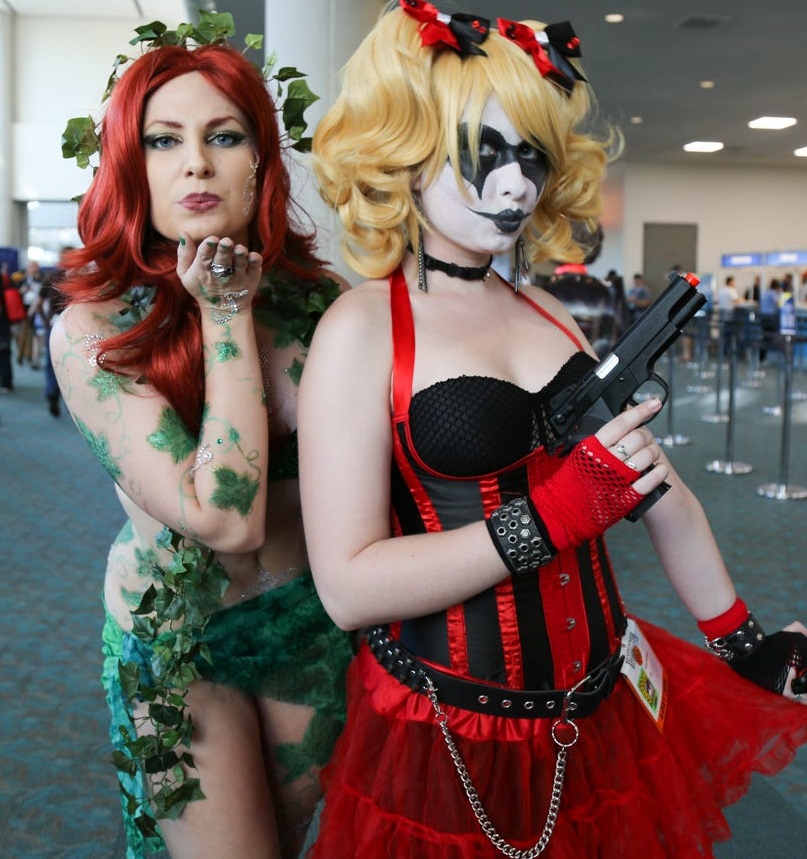
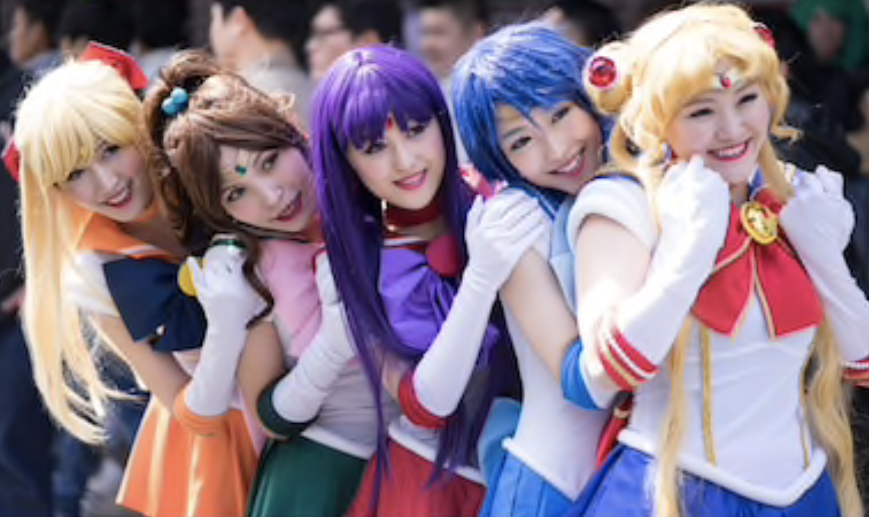
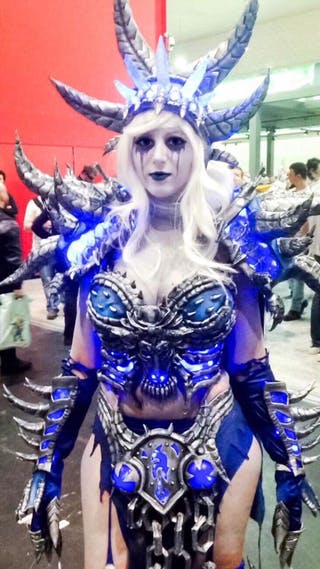
Cosplay Terminology
Con Goer -
Convention attendees. Con-goers are usually from the
area the convention is being held in, but in cases with
large conventions such as Comic-Con, can be from
anywhere around the world. Con-goers, while sometimes
normal in everyday life, are often possessed with a bout
of insanity at conventions. These bursts can last the
length of the convention and may include fangirlism or
fanboyism, sudden and inexplicable extraverted
behaviors, offers for free hugs, and/or glomping.
Glomp - A hug mixed with a tackle. Glomping is
incredibly popular at conventions, but sometimes quite
dangerous. It is a sign of intense excitement to see
someone, but can sometimes cause mass mayhem. Tumbling
to the ground after a strong glomp has been known to
cause accidents. Because of this, glomping is banned at
many conventions. Most of the time, glomping is
reciprocated, but is occasionally performed without the
other party’s desire or consent.
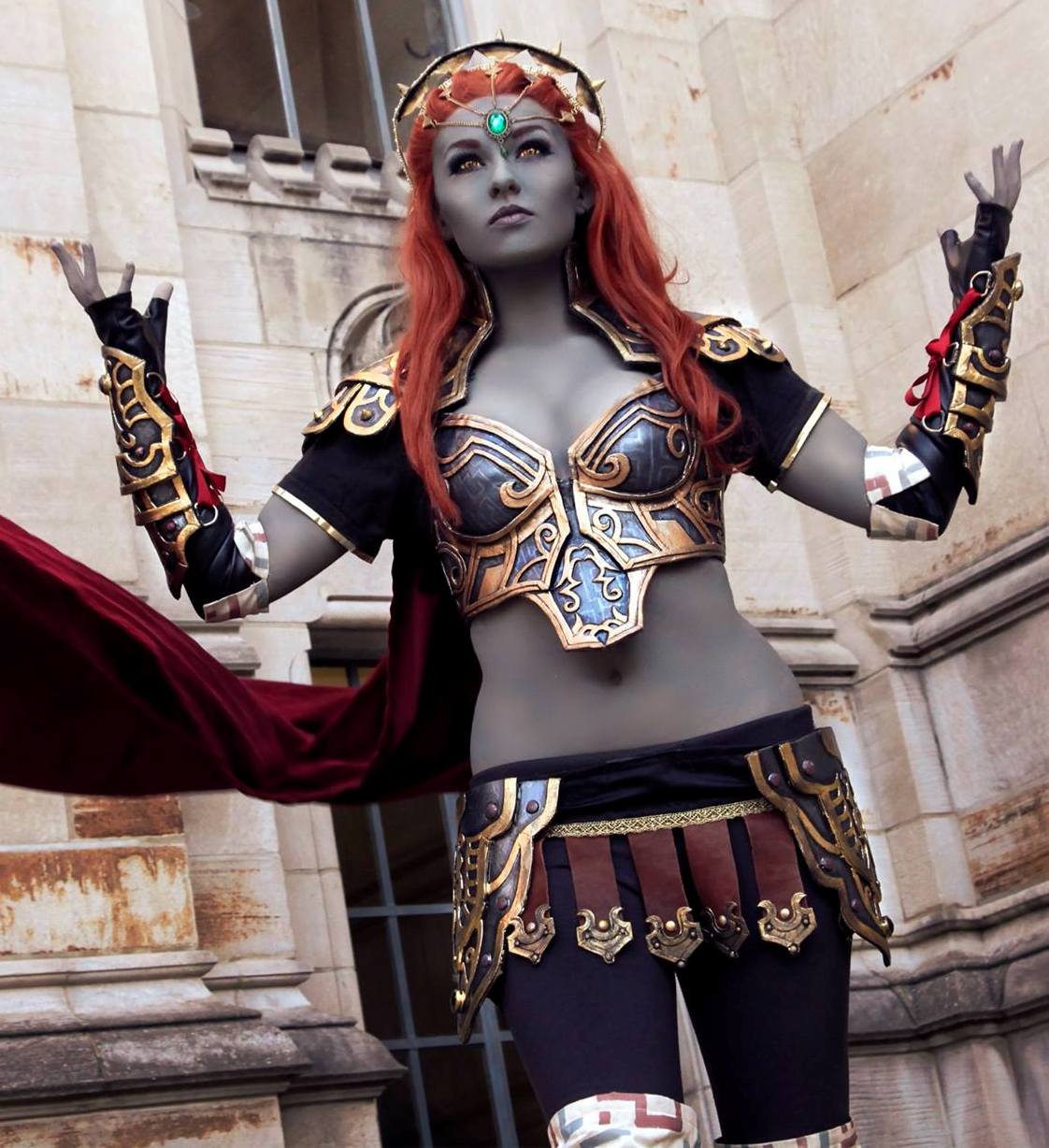
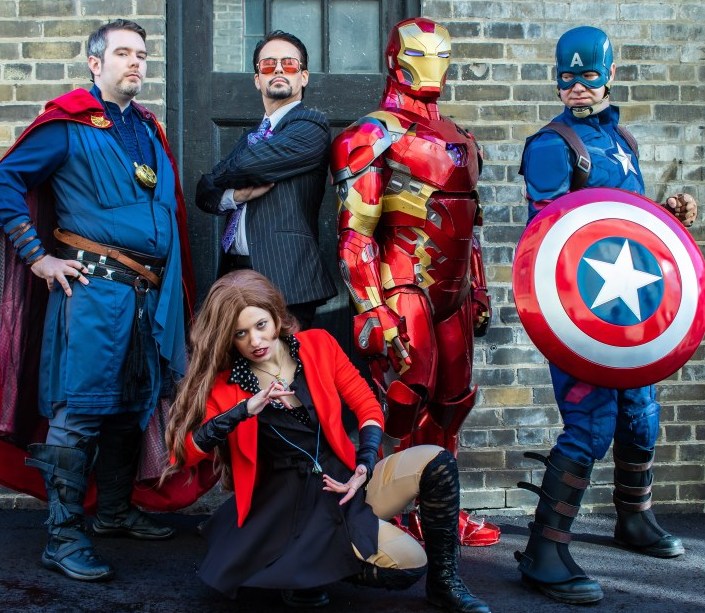
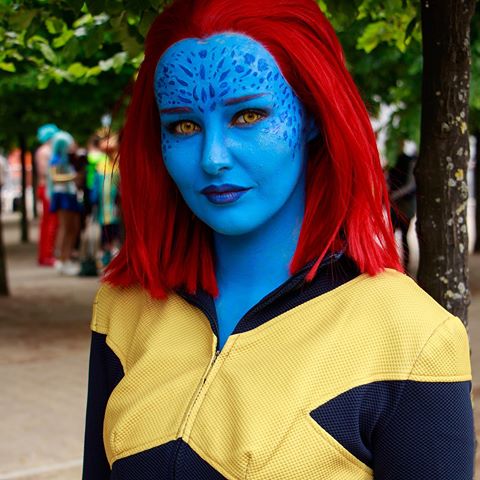
Cosplay
Explained
Video: What is Cosplay?
Cosplay Terminology
Mental Floss: Cool Cosplay Terms
Cosplay 101: Everything
You Need to Know
Famous Cosplayers
Video: Overview of Cosplay Culture
Cosplay Dictionary
Queens of Cosplay:
Mastering the Art of Make-Believe
Video Talk: What Does it Mean to be a Cosplayer?
Info:
Kinky Culture
Comic Con: Costumes That
Turned Heads
LARP - Short for “Live Action Role Play.” It is a
performance where cosplayers physically act out their
character’s actions. These can be simple, like a group
friends playing around together at home for a few hours.
In other cases, they can be very advanced, where a team
of event organizers plan out various circumstances for a
large group (sometimes thousands of people) that can
last for days.
Furry - Someone who is interested in anthropomorphic
creatures. The precise definition has not been agreed
upon, even by furries themselves, so a furry can be
anyone who is mildly interested in human-like animals to
someone who sincerely wishes to be one. As it pertains
to cosplay, furry is a specific type of Kigurumi. The
term furry is only applied when someone is cosplaying an
animal or animal-like creature, such as a Pokemon.
Furries wear full body suits and facial coverings that
canvass their entire head.
Con Funk - The stench of unwashed con-goers. Because
many con-goers cosplay every day in thick outfits (sometimes the same outfit every day) heat, sweat, and
body odor easily builds at conventions. Some con-goers
also sleep in their cars to avoid hotel room fees or are
too busy partying to sleep at all; this leaves them with
no access to or no time to use a shower. Con funk is
present at every convention and can only be evaded by
avoiding large crowds and carrying body spray at all
times.

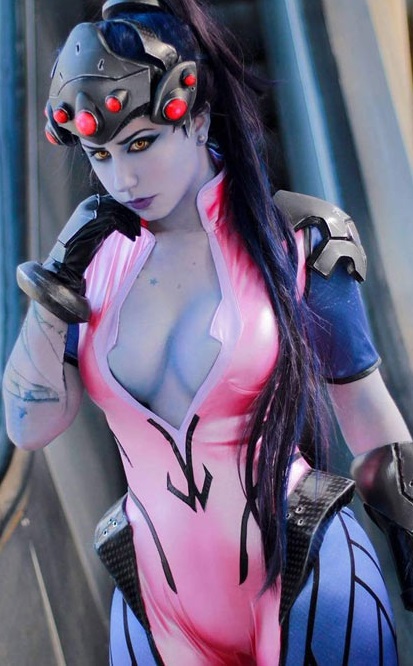
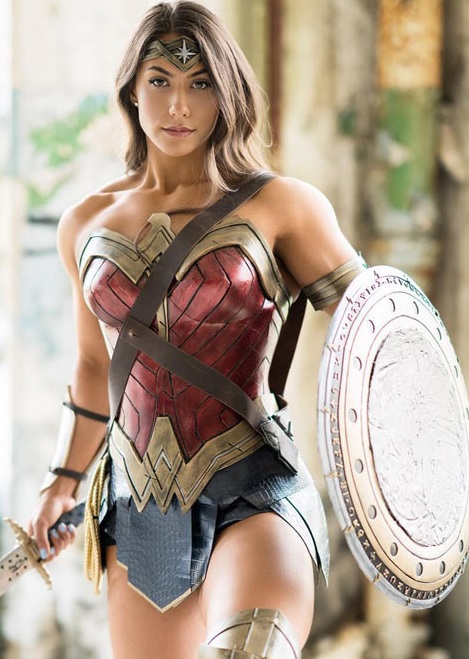
PBS Video: Queer Black Cosplayer
Cosplay
Explained
Video: What is Cosplay?
Cosplay Terminology
Mental Floss: Cool Cosplay Terms
Cosplay 101: Everything
You Need to Know
Famous Cosplayers
Queens of Cosplay:
Mastering the Art of Make-Believe
Video: Overview of Cosplay Culture
Cosplay Dictionary
Video Talk: What Does it Mean to be a Cosplayer?
The Best Disney Cosplays
Cosplay Etiquette Rules
Info:
Kinky Culture
Comic Con: Costumes That
Turned Heads
What is the Pup Play Queer Subculture?
Beginner's Guide to Cosplay
What is
Cosplay? No, it’s not Halloween, even if it feels like a
national holiday.
Yes, the crowds in colorful and intricate costumes in
the streets of downtown San Diego are the most charming
and visible aspects of the largest comic-book conference
in America, Comic-Con. So what exactly is cosplay?
Here’s a quick look inside the cultural world that
symbolizes the spirit of Comic-Con.
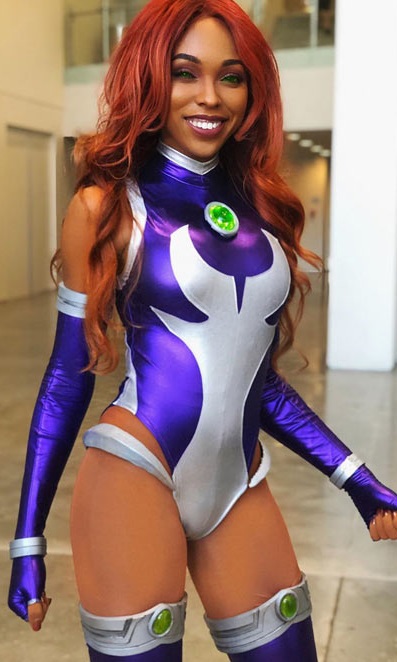
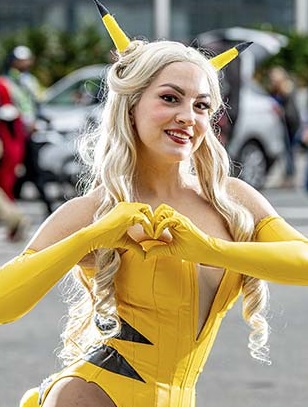
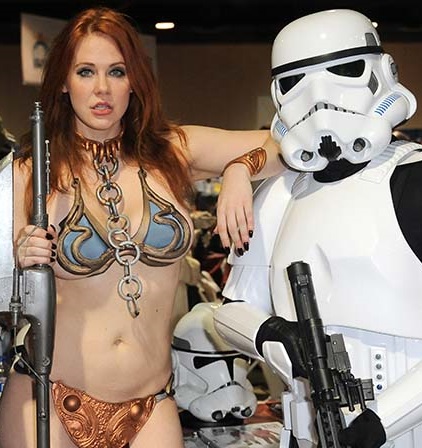

Cosplay is the art of costume role-playing. The
etymology of the term combines words like costume and
play to describe the art form in which people adopt the
attire and personality of a fictional character in comic
book or popular culture. In an essay published online,
Chris Kincaid describes four characteristics that
constitute cosplaying: narrative, clothing, play and
player. People who participate in cosplaying are called
cosplayers.
How is cosplay different than a Halloween costume?
Unlike Halloween costumes, cosplay costumes tend to be
works of art. Cosplayers can sometimes spend an
extensive amount of
time and money designing and assembling costumes from
concept art, like in comic books or video games or
television series. Cosplay costumes can involve a wide
range of average materials like foam and fabric to
create armor or capes. But cosplaying is also a
community, and it draws like-minded people to brainstorm
ideas, exchange materials and gather at events like
Comic-Con. Oh, and also, there’s no trick or treating.
Where did
cosplay begin? For centuries, people have worn costumes
to celebrate cultural events. Modern cosplay, however,
appears to have originated in the 1970s with the
emergence of Japanese comic books known as manga and
anime, according to the book “Cosplay World.” Nobuyuki
Takahashi coined the term in the June 1983 issue of a
Japanese publication featuring young people wearing
super hero costumes. Takahashi said it took a few years
for the term to go mainstream in Japan.
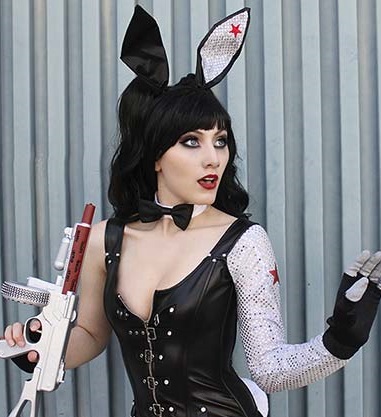
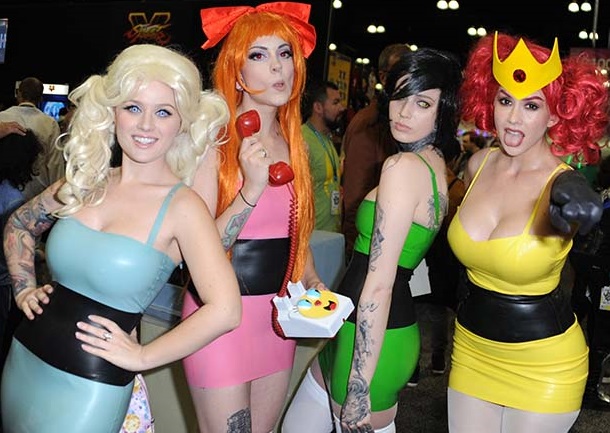
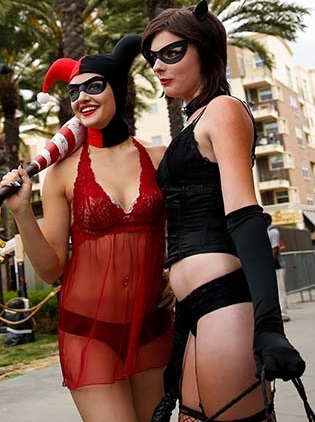

What makes good cosplay? The list of qualities that make
good cosplay will always be open to interpretation, but
three main factors make the best cosplay stand out from
the pack.
Creativity: Good cosplaying demands a lot of creativity
to render a physical costume from concept art,
especially when there are no instructions and no other
models to replicate.
Accuracy:
Attention to detail will make cosplayers stand out,
everything from texture of someone’s fabric to the body
paint that covers every inch of their skin.
Staying in
character: Wearing the skin of a fictional character is
just half of cosplaying, the other half is about
adopting the personality, quirks or sounds that complete
the character.
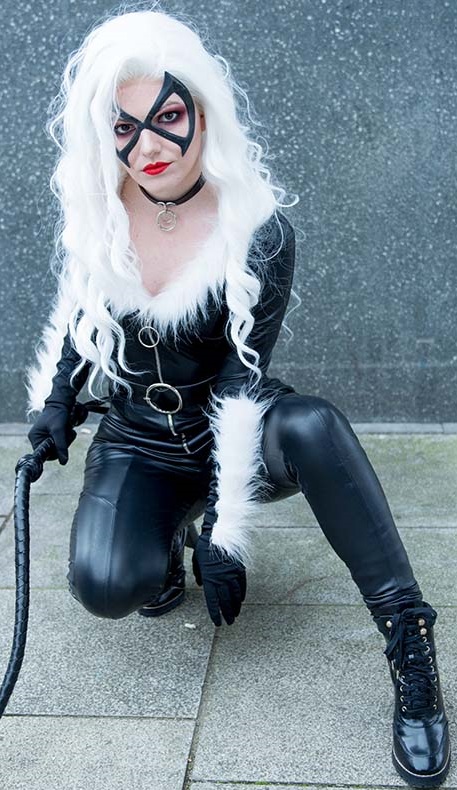

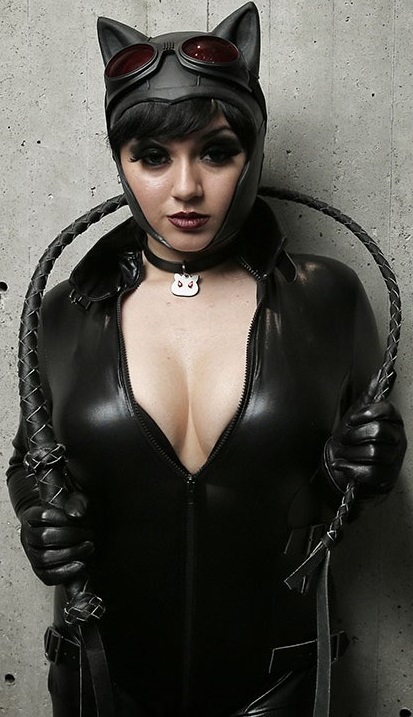
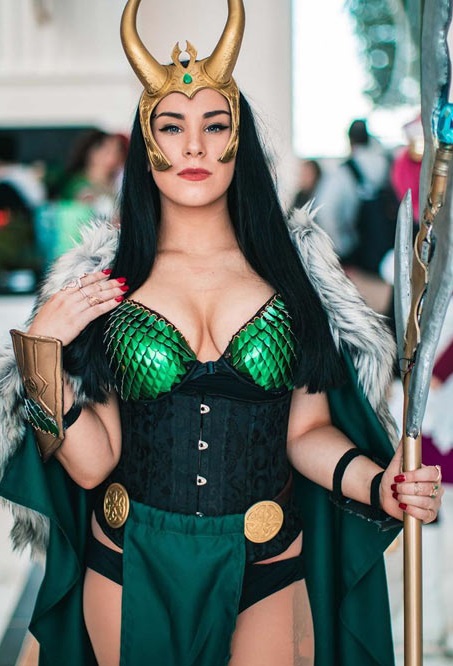
Does it pay to be a cosplayer? Definitely, sometimes.
Costume contests, like the Comic-Con Masquerade, offer cosplayers the opportunity to compete for prizes and
bragging rights. Such competitions can also be good for
exposure, especially for those who make money from their
cosplay efforts. Fox News once reported that cosplayers
at Comic-Con in San Diego could earn several thousand
dollars and that “top talents are pulling in close to
$200,000 a year.” We picked the wrong careers, guys.
How much does it cost to create or buy a cosplay
costume? Cosplayers invest time, effort and often money
into creating the best costumes. Though the cost of
materials can vary from design to design, some outfits
can be pulled together for as little as $50.
[Source: Luis Gomez, San Diego Union-Tribune]
Beginner's Guide: What is Cosplay?
Cosplay 101: Everything
You Need to Know
Comic Con: Costumes That
Turned Heads
Queens of Cosplay:
Mastering the Art of Make-Believe
Cosplayers in the Age of COVID 19
Video: Overview of Cosplay Culture
Furries
Community
What is your fursona?
The Furries Community or Furry Fandom are enthusiasts for
animal characters with human characteristics, in
particular a person who dresses up in costume as such a
character or uses one as an avatar online. The Furry
Fandom is a subculture interested in fictional
anthropomorphic animal characters with human
personalities and characteristics. Furry fandom is also
used to refer to the community of people who gather on
the Internet and at Furry Conventions.
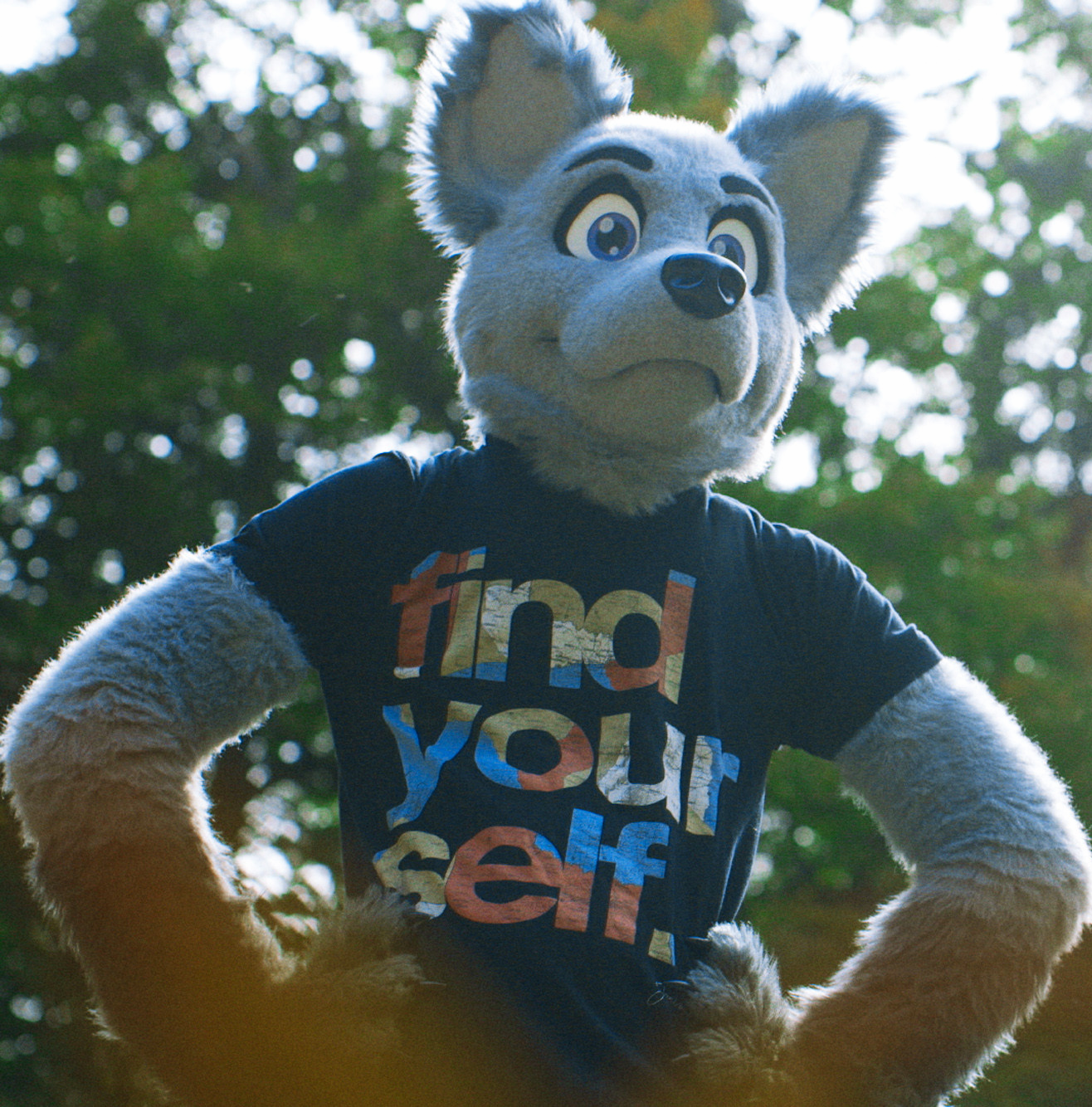
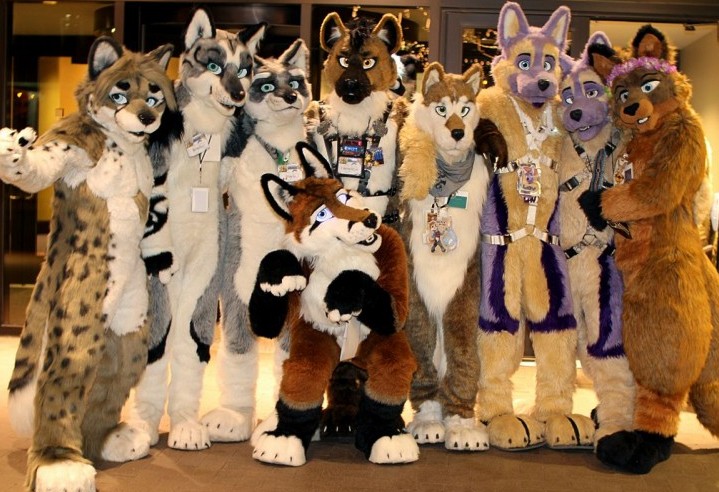
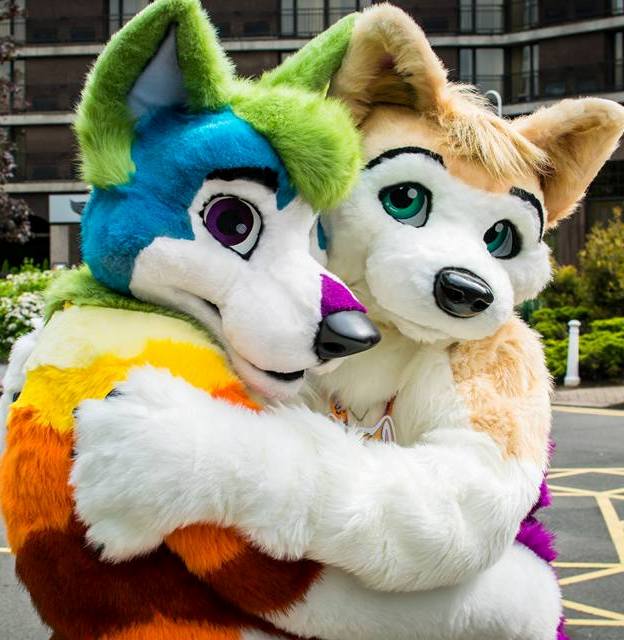
Anthropomorphic animal characters created by Furry Fans,
known as Fursonas, are used for role-playing in MUDs
(Multi-User Dungeons) and on internet forums.
Role-playing also takes place offline, with petting,
hugging, and "scritching" (light scratching and
grooming) common between friends at social gatherings.
Fursuits or furry accessories are sometimes used to
enhance the experience. The term "yiff" is sometimes used
to indicate sexual activity or sexual material within
the fandon. This applies to sexual activity and
interaction within the subculture whether in the form of
cybersex or offline.
When compared with the general population, homosexuality
and bisexuality are over-represented in the furry fandom
by about a factor of 10. Of the US population, about
1.8% of persons self-identify as bisexual and 1.7% as
homosexual according to a 2011 study from scholars at
UCLA. In contrast, according to four different surveys
14–25% of the fandom members report homosexuality,
37–52% bisexuality, 28–51% heterosexuality, and 3–8%
other forms of alternative sexual relationships.
Approximately half of the respondents reported being in
a relationship, of which 76% were in a relationship with
another member of furry fandom. Examples of sexual
aspects within furry fandom include erotic art and
furry-themed cybersex.
Vox: Questions About Furries You are Embarrassed to Ask
Psychology Today: What's the Deal with Furries?
What is a Fursona?
Vanity Fair: Pleasures of the Fur
Inside the Life of a Furry
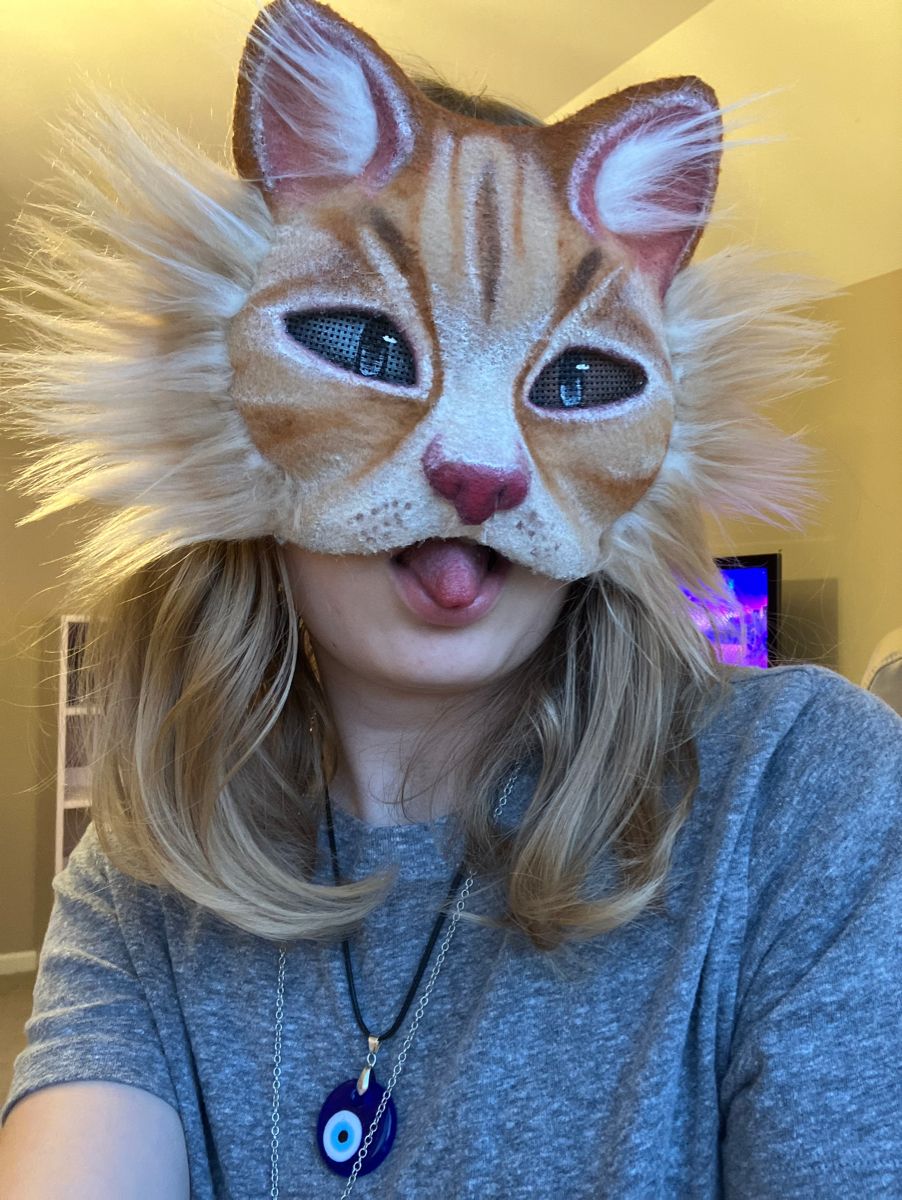
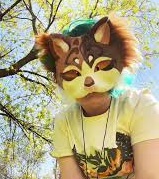
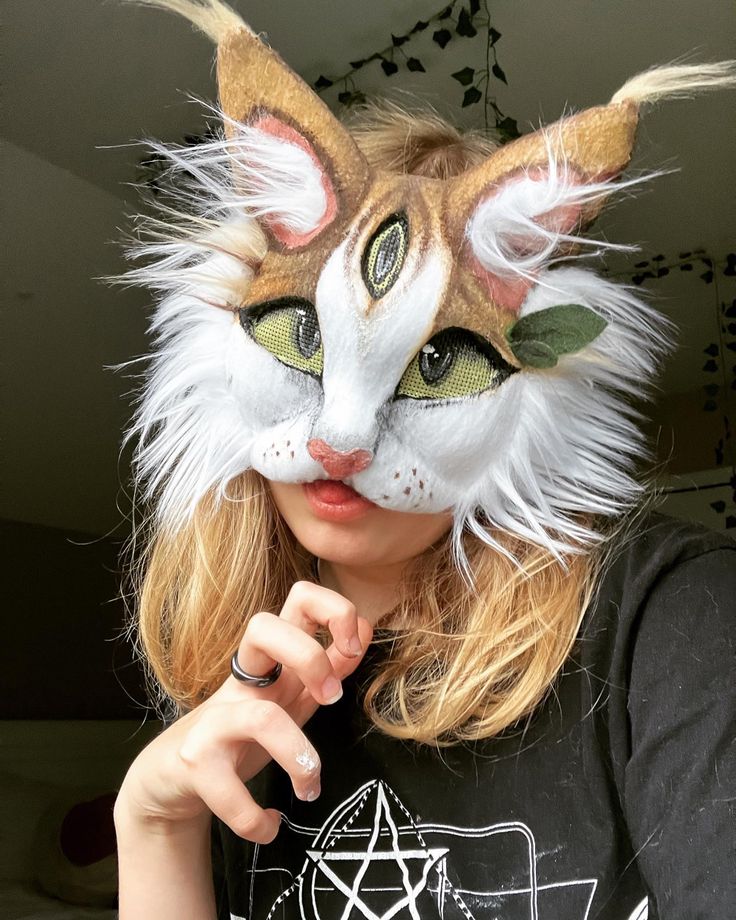
Therian
Identification
Furries... Therians... Otherkin...
A "therian"
is someone who identifies as a non-human animal.
Therianthropy is the integration of animal and human
identities. Therianthropy refers to the fantastical, or
mythological, ability of some humans to change into
animals. Therianthropes are said to change forms via
shapeshifting. “Therian” is short for “therianthrope”.
It means a person who identifies integrally as a
nonhuman being.
In
shamanic cultures, the notion of "animal spirits" is
related to this belief. Native communities often focus
spiritual practice around animal personas such as
eagles, elk, wolves, bears, ravens, beavers, salmon, or
crows.
Is therianthropy a mental illness?
Therianthropy is the belief that one is part non-human
animal. The theriotypes experienced traverse all species
and can be extinct or extant. Opinions vary in the
academic literature as to whether it is a mental illness
or a spiritual belief. However in the West it is almost
always placed within the psychiatric arena.
What is a therian vs furry?
In general, furries are individuals who say they are
furries. Therians are individuals who believe they are
not completely human and instead identify as a species
of non-human animal. Otherkin are individuals who
believe they are not completely human and, instead
identify as a mythical or fantasy-based being.
--Furries
- People who dress up and perform as non-human animals
--Therians
- People who identify as a blend of human and non-human
animal
--Otherkin
- People who identify as a blend of human and mythical
being
People who identify as therians or otherkins believe
that they have a spiritual or psychological connection
to a non-human entity, such as an animal or mythical
creature. This identification can provide them with a
sense of belonging, purpose, or understanding of their
place in the world. It's important to approach these
identities with respect and empathy, as they are deeply
personal to the individuals who hold them.
Shapeshifting
Shapeshifting (or animorphing) in folklore, mythology
and anthropology generally refers to the alteration of
physical appearance from that of a human to that of
another species. Lycanthropy, the transformation of a
human into a wolf (or werewolf), is probably the
best-known form of therianthropy, followed by
kynanthropy (transformation into a canine) and
ailuranthropy (transformation into a cat).
Classic
literature is filled with characters who turn into
animals such as bears (Brother Bear, Brave Margaret),
wolves (The Werewolf), cockroaches (Metamorphosis), frogs
(Frog Princess), and bats (Dracula).
Other
Alternative Lifestyles
Ballroom Culture
Drag|Cross Dressing
BDSM|Kink
Bear Community
Polyamory
Down Low
HOME
QUEER CAFE
│ LGBTQ Information Network │ Established 2017
|